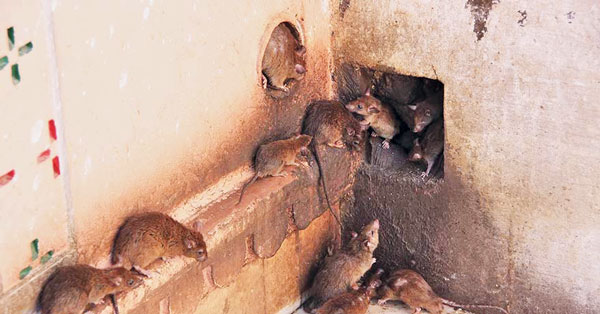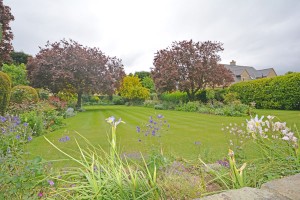I say it every year ‘How time flies’, and whilst the weather has been changeable our gardens seem to carry on regardless, with the promise of a bounty of flowers and vegetables, unfortunately the grass and weeds seem to have the same idea, with an incredible energy to outperform everything else.
I am often asked about what to do with bulbs such as Tulips and Daffodils (Narcissus) after they have finished flowering. Tulips bought for spring display are mostly grown in Holland where the soil is quite sandy and free draining. Small bulbs are lined out and grown on for two to three years after which they are lifted and prepared for sale as ‘flowering size’ bulbs. Once they have flowered in our garden (or container) the bulb that you planted is somewhat exhausted and will not flower as well in the second year. In addition if your soil is on the heavy side they can rot in the soil especially if the soil is a little boggy. The best approach is to remove the flowers after they have faded and feed with a general fertilizer, liquid or granular, ideally let the foliage die down completely before lifting, this way you have given the plant the opportunity to develop a reasonable bulb which will hopefully provide a flower next year. In the case of tulips this may take a couple of years. Once the foliage has died down carefully lift the bulbs removing as much soil as possible and leave them on the greenhouse or garage bench to dry out. After a couple of weeks, carefully remove any remaining soil and dry roots store them in a dry place until late September when they can be replanted. For a reliable display next spring it is best to purchase new bulbs and use previous seasons bulbs for other parts of the garden or for naturalising in a grassy area.
Planting saved bulbs at the same time as your new ones where you would like them to flower. Daffodils will naturalise more readily but the large flowered Tulips don’t tend to naturalize very well.
Early June is the best time to plant summer containers as particularly in the North the night temperatures are still a little cold and there is still a risk of frost in the third week of May. There are lots of different types of potting compost on the market and it can be quite confusing when faced with several products at the Nursery or Garden Centre. Most summer bedding plants are not too fussy about the type of compost. One that holds moisture well is perhaps the most important. Some compost have slow release fertilizer with is helpful but does not mean that you will not have to feed them throughout the season if the weather is hot and you are watering more regularly. They are a good insurance if you plan to be away for a couple of weeks but I prefer to rely on the help of my neighbour or a friend to keep an eye on my greenhouse and containers. As for water retention additives, I don’t use them as they remain in the compost for years and if like me you like to dig the old compost into my flower beds the jelly like granules can make the soil a little mushy. Choosing plants is a personal thing, whether you prefer colour clash or harmony don’t be afraid to try something different, I often arrange a small group of plants in the garden centre to see how they look together before I make a purchase.
It’s a good time of year to take softwood cuttings and many of our garden shrubs and what we call short lived perennials (Wallflowers and Pinks) can be propagated with a little care. New fresh growth has the ability to root fairly quickly but their soft sappy nature means that the do tend to wilt easily. What I like to do is fill an old plastic soup container with water and as you remove the material from the plant place it into the water immediately. I leave the cuttings in the water overnight and discard those that have wilted before preparing the cuttings. ‘Free’ draining compost is essential and I like to add perlite which not only improves drainage but holds water too. With a sharp knife carefully remove the lower leaves and cut the stem just below a leaf joint. Dipping the cutting in a rooting powder or gel will improve rooting and reduce the risk of rotting. Insert the cutting around the edge of a pot and firm the compost carefully. Water well and place the whole pot in a re-sealable plastic bag on a warm windowsill. Check on the cuttings daily, by opening the top of the bag for a few minutes to allow the air to circulate and spraying with fresh water if they seem a little dry. The cuttings should root within three to four weeks after which they can be potted on into good general compost and placed on a greenhouse bench or windowsill (Without the plastic bag) to grow on. After a month or so they should be established enough to be stood outside on the patio or in the cold frame, before planting out in the garden later in the year.
There is nothing quite like home grown vegetables and even if you only have a small garden many salad crops can be grown in containers to provide scrummy additions to sandwiches and snacks. Radish, Lettuce, Salad Leaves, Cress and Carrots can be sown fortnightly up until late August to provide a succession of crops through to late September. If you are growing in container use good quality compost, I like to use a 50/50 mix or John Innes and soilless compost as I find it easier to re-wet if it dries out. The most important rule for successional crops is sow thinly and regularly, keep well watered and harvest when young. The mini leaves and pea shoots used in many fashionable restaurants are in most cases just seedlings of normal cultivars. If you have any pea seeds left, sow them in a tray about half an inch (1.2cm) apart pressing them gently into the compost and covering with a half an inch of compost, water and place on a warm windowsill. Within a few weeks you will be able to snip the 2” (5cm) shoots off and use them in stir fries or salads. Once all the shoots have been cropped empty the contents on o the compost heap.
On sunny days and evenings, make time to sit out and enjoy your efforts, I find a large glass of what you like is a great antidote to the stresses of modern life.
Next month, How to prolong our garden display, Feeding watering and dead heading. Summer pruning, more propagation.
Happy gardening.
York Gate Garden is owned and maintained by the charity Perennial (Gardeners Royal Benevolent Society) which provides advice help and support in times of need or difficulty for people who are working in, or have retired from any of the gardening trades. (Registered Charity no. 1155156). Further details can be found on our website at www.perennial .org.uk (York Gate is open until 30th September 2015, Sunday to Thursday, 1:30pm to 4:30pm)







